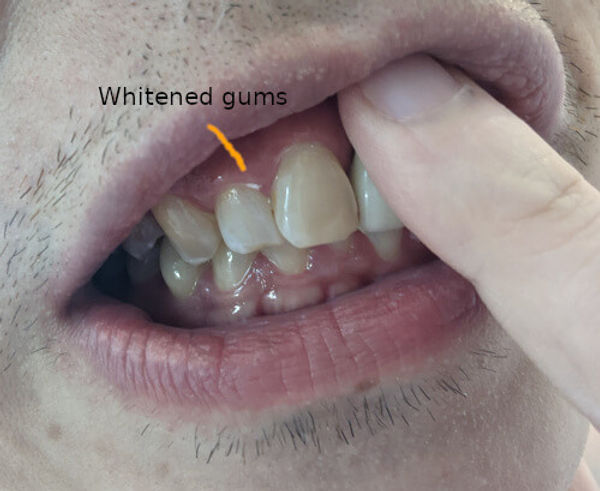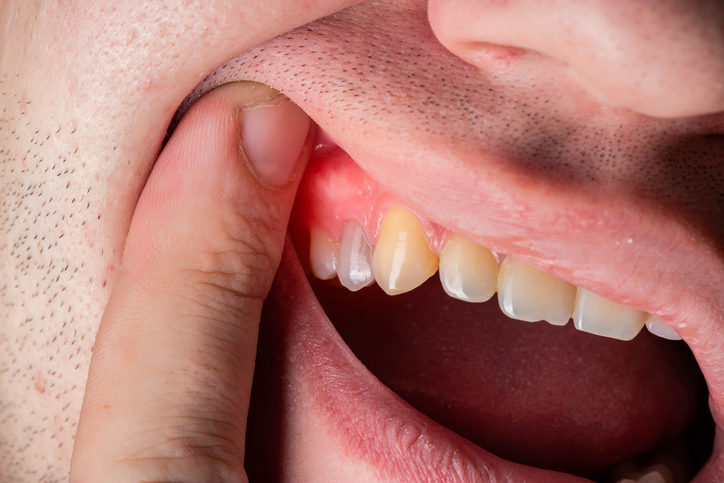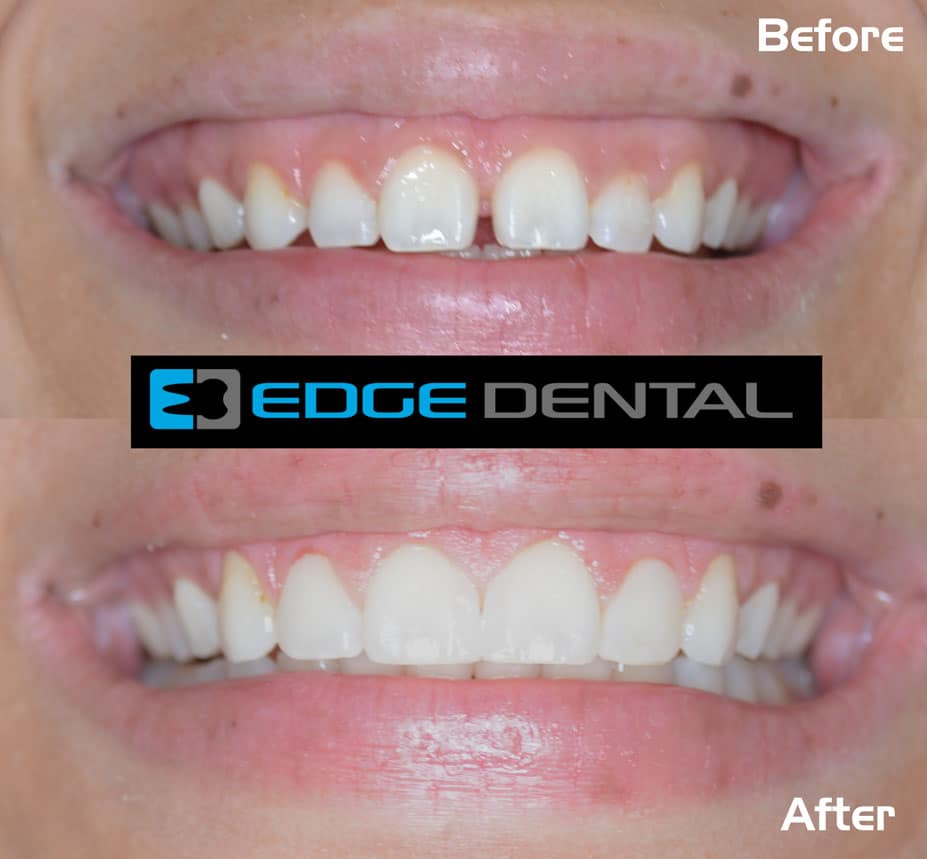White Gums After Teeth Whitening

The pursuit of a brighter, more radiant smile has led many to undertake teeth whitening treatments, either professionally or through at-home kits. While these treatments can be highly effective in removing stains and whitening teeth, some individuals may experience an unexpected side effect: white gums. This phenomenon, characterized by the temporary whitening or lightening of the gum tissue, can be alarming, especially for those who are not prepared for such an outcome.
To understand why white gums may occur after teeth whitening, it’s essential to grasp the basic chemistry behind these treatments. Teeth whitening products, whether used in a dental office or at home, typically contain hydrogen peroxide or carbamide peroxide as the active ingredient. These peroxides break down into oxygen radicals, which penetrate the tooth enamel and dentin, breaking down the chromogens (colored molecules) that cause tooth discoloration. The resulting effect is a brighter, whiter smile.
However, the interaction between the whitening agents and the gum tissue is a bit more complex. The gum tissue, or gingiva, is a mucous membrane that surrounds the teeth, protecting them and the underlying bone. This tissue is more delicate and sensitive compared to tooth enamel. When hydrogen peroxide or carbamide peroxide comes into contact with the gum tissue, it can cause a temporary bleaching effect, leading to the appearance of white gums. This is especially likely if the whitening product is left in contact with the gums for an extended period or if the concentration of the peroxide is too high.
Several factors can increase the likelihood of experiencing white gums after teeth whitening. The concentration of the peroxide in the whitening product is a significant factor; higher concentrations can lead to a greater risk of gum bleaching. The method of application is also crucial. In-office whitening treatments, which often use higher concentrations of peroxide, may be more likely to cause this effect, especially if the dentist or dental hygienist does not take adequate precautions to protect the gum tissue. At-home whitening kits can also cause white gums, particularly if the user does not follow the instructions carefully, allowing the gel to come into prolonged contact with the gums.
The good news is that white gums caused by teeth whitening are generally temporary and harmless. The effect usually fades within a few days to a week after the treatment, as the gum tissue returns to its normal color and health. However, to minimize the risk of this occurrence, it’s essential to follow a few preventive measures. When undergoing professional teeth whitening, ensure that your dentist or dental hygienist uses a gum barrier or protective gel to shield your gum tissue from the whitening agents. For at-home treatments, carefully follow the instructions provided, taking care to apply the whitening product only to the teeth and avoiding any contact with the gums.
In addition to these preventive measures, maintaining good oral hygiene can also play a role in reducing the risk of complications, including white gums, after teeth whitening. Regular brushing and flossing help keep the gums healthy, potentially making them less susceptible to the bleaching effects of the whitening agents. A healthy diet rich in vitamins and minerals, particularly those that promote gum health such as vitamin C, can also contribute to resilient gum tissue.
It's worth noting that while white gums are usually a temporary and benign side effect, any discomfort, pain, or prolonged changes in gum color should be brought to the attention of a dental professional. They can provide guidance on how to manage any side effects and ensure that the gums return to their normal state.
For those who have experienced white gums after teeth whitening, there are a few steps that can be taken to promote the return of normal gum color and health. Gently rinsing the mouth with warm salt water several times a day can help soothe the gums and promote healing. Applying a topical gel or cream containing aloe vera or vitamin E may also help in calming and protecting the gum tissue. However, it’s crucial to consult with a dental professional before using any new products, especially if you’re experiencing any sensitivity or discomfort.
In conclusion, while white gums can be an unexpected outcome of teeth whitening treatments, they are generally a temporary and harmless side effect. By understanding the causes, taking preventive measures, and maintaining good oral hygiene, individuals can minimize the risk of this occurrence. For those who do experience white gums, prompt consultation with a dental professional can provide reassurance and guide the necessary steps to restore the health and natural appearance of the gum tissue.
What causes white gums after teeth whitening?
+The temporary whitening or bleaching effect on the gum tissue is caused by the active ingredients in teeth whitening products, typically hydrogen peroxide or carbamide peroxide, coming into contact with the gums.
Is it safe to have white gums after teeth whitening?
+Yes, white gums resulting from teeth whitening are generally safe and temporary. However, if you experience discomfort, pain, or if the condition persists, consult a dental professional.
How can I prevent white gums when using teeth whitening products?
+To minimize the risk of white gums, ensure that you follow the instructions carefully, especially when using at-home kits. For professional treatments, ask your dentist about protective measures for your gum tissue.
The key to a successful teeth whitening experience, without the unwanted side effect of white gums, lies in understanding the treatment, following instructions meticulously, and prioritizing gum health before, during, and after the procedure.
As the pursuit of oral aesthetics continues to evolve, so does our understanding of the potential effects of cosmetic dental treatments. By being informed and taking proactive steps, individuals can enjoy the benefits of teeth whitening while maintaining the health and integrity of their gum tissue. Whether through professional dental care or at-home treatments, the journey to a brighter, more confident smile should always be guided by the principles of safety, efficacy, and overall oral well-being.

